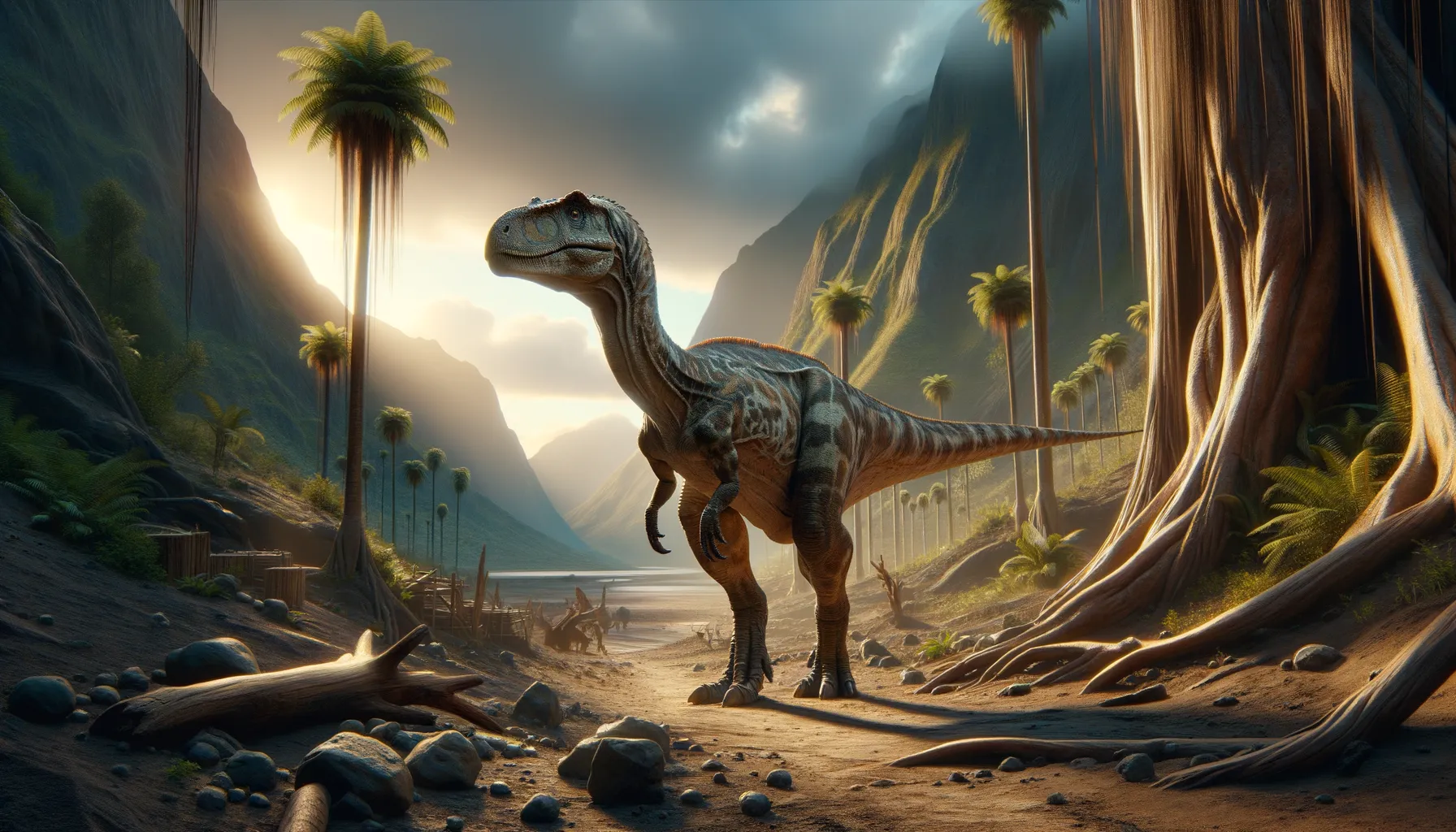
Arstanosaurus
Mystery of the Cretaceous steppe.
Period
Cretaceous
Length
Around 4 to 5 meters long.
Height
Approximately 2 meters at the hip.
Weight
Approximately 600 kilograms.
Arstanosaurus was a plant-eating dinosaur from the Late Cretaceous period, primarily known from fossil finds in Kazakhstan. It was a bipedal dinosaur, possibly belonging to the hadrosaurid or iguanodontid family. While initially considered to have been poorly understood, later studies have suggested more definitive attributes placing it within the diverse theropod lineage. Its fossils, although incomplete, offer crucial insights into the diversity of dinosaur species in the Asian region.
Diet
Arstanosaurus was likely a herbivore, feeding on a variety of plants available during the Cretaceous period. Its diet potentially included conifers, ferns, and flowering plants, utilizing its beak to clip vegetation.
Hunting
As a herbivore, it did not engage in hunting activities. It relied on its ability to graze effectively over large areas to sustain its sizable body, and likely foraged alone or in small groups.
Environmental challenges
Living in the Late Cretaceous period meant dealing with fluctuating climates, including seasonal variations that affected food availability. Periodic droughts or floods could have presented significant challenges, influencing migration patterns. Predators like theropods would have posed a constant threat, requiring vigilance and formidable size for protection.
Speed
Moderate, typical for a medium-sized herbivore.
Lifespan
Estimated to be several decades.
First discovery
First discovered in Kazakhstan in 1982.
Fun Facts
- Arstanosaurus was a herbivorous dinosaur that lived during the Late Cretaceous period, around 85 million years ago.
- It was discovered in what is now Kazakhstan, offering insights into the dinosaur fauna of central Asia.
- The name 'Arstanosaurus' means 'Arstan lizard', named after the location of its discovery.
- Although it was originally thought to be a hadrosaur, some scientists have debated its classification due to incomplete fossil evidence.
- Arstanosaurus may have roamed the earth at the same time as some of the last dinosaurs before the mass extinction.
- Despite its intriguing discovery, Arstanosaurus is still a bit of a mystery due to the limited fossil record.
- Studies of Arstanosaurus help paleontologists understand the diversity and distribution of dinosaurs in ancient ecosystems.
Growth and Development
Arstanosaurus likely experienced rapid growth in its early years to quickly achieve a size that could deter predators. Its development included changes in its dentition to accommodate a broader range of plant materials, ensuring survival amidst changing landscapes. Reaching full maturity might have taken several years, aligning with similar herbivorous dinosaurs.
Habitat
Arstanosaurus inhabited lush floodplain environments, rich in plant life supporting its herbivorous diet. These regions would have been characterized by river systems offering reliable water sources. The varied terrain provided both food and protective cover from predators, as well as nesting opportunities.
Interaction with other species
Arstanosaurus likely coexisted with other dinosaur species, sharing habitats with smaller herbivores and large carnivores. Interaction with different species ranged from passive coexistence to active avoidance of predators. Competition for resources would have been a driving influence on its behavior and territoriality.
Natural lifespan
Arstanosaurus is thought to have lived for several decades under favorable conditions.
Reproduction
As a dinosaur, Arstanosaurus would have reproduced by laying eggs. Nests were likely constructed in protected areas to guard against environmental threats and predators, often camouflaged within thick vegetation. Parental investment possibly included guarding the nests until hatching occurred, then allowing hatchlings to grow quickly under protective care.
Social behaviour
Arstanosaurus may have exhibited herd-like behavior similar to other herbivorous dinosaurs, providing collective defense against predators. Social interactions probably included coordinated grazing and communication through vocalizations. This social structure would help in efficient resource utilization and predator detection.
Fossil locations
Fossils of Arstanosaurus have primarily been found in Kazakhstan, offering insights into the diverse Cretaceous ecosystems of Central Asia. These discoveries contribute to understanding the geographical distribution of herbivorous dinosaurs during this period. The limited number of fossils presents challenges but also opportunities for new findings that could redefine its ecological role.
